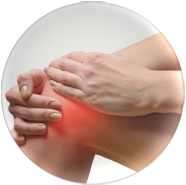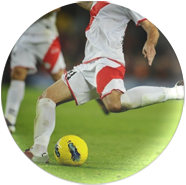Shoulder Rotator Cuff and Impingement
The shoulder joint is a ball and socket joint with a large ball and small socket. This permits a large range of motion but the payback is in the form of instability. A shoulder dislocation occurs when the ball pops out of the socket usually damaging the supporting tissues. To reduce instability a tube of muscle surrounds the joint providing dynamic stability when required. This structure is known as the rotator cuff and usually works away quietly in the background. Repetitive injury to the shoulder can precipitate changes to the tendons of the rotator cuff whereby they fail to heal up after bouts of activity. This degenerative condition is termed a tendinosis or tendonopathy and most frequently effects the supraspinatous though the infraspinatous or subscapularis muscles/tendon units may also be involved. Not uncommonly the tendon starts laying down calcium as if it were a bone and this very painful condition is termed a calcific tendinitis.
Typically this type of shoulder problem leads to shoulder impingement. Because the rotator cuff is no longer working as effectively the bursa lying on top of the rotator cuff gets pinched; shoulder impingement. This is labelled as subacromial or subdeltoid bursitis and whilst this may occur in isolation it much more commonly a problem secondary to other shoulder pathology.
Rotator cuff and shoulder impingement occur in unison and produce a pain across the angle of the shoulder or even in the upper arm. It is particularly painful when raising the arm above the shoulder and when rolling onto it at night. Treatment is very variable depending upon many factors but may include physiotherapy and rehabilitation, cortisone injection, extracorporeal shockwave therapy and even surgery.
Click here for video of management rotator cuff with extracorporeal shockwave therapy



